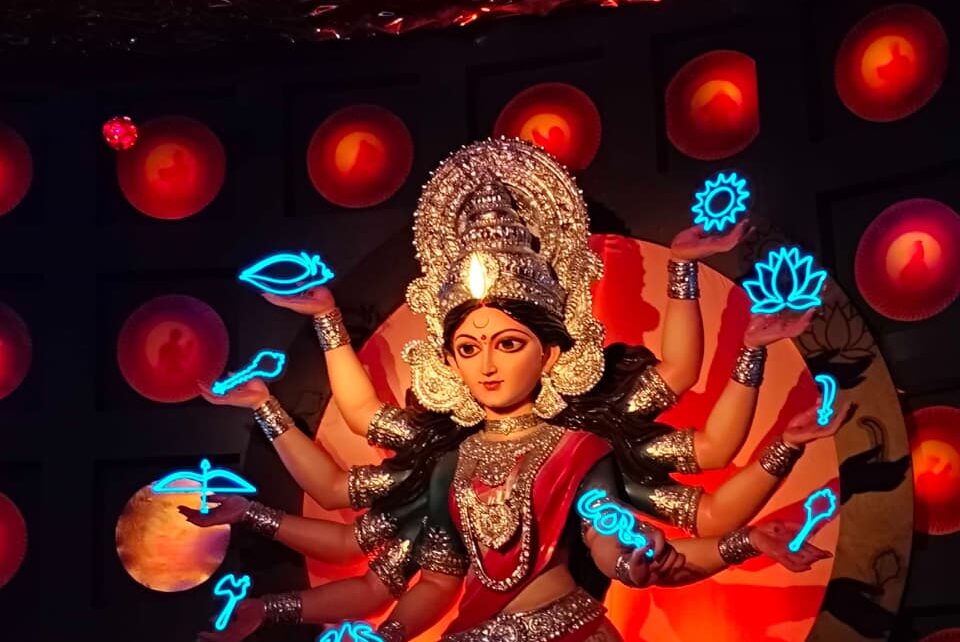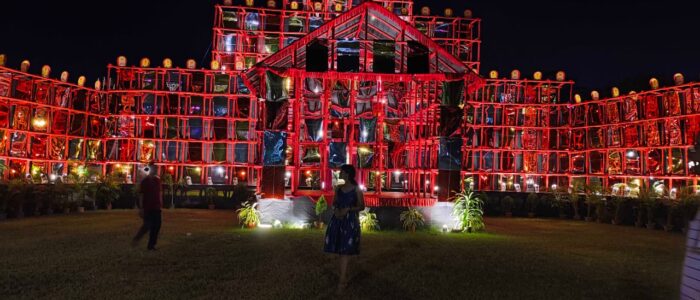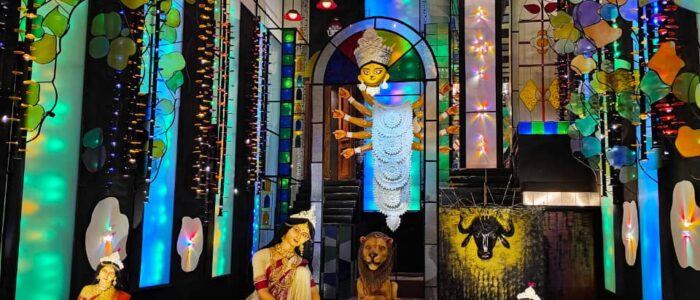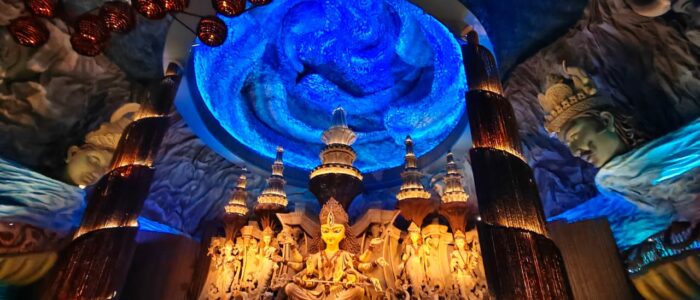By Netpal Travel Bureau
Durga Puja is more than a festival in Kolkata, it’s an emotion, a collective act of creation that makes over every street corner into a work of art. The preparations begin months in advance in Kumartuli, where clay sculptors craft the goddess with gentle reverence. Their hands shape not just idols, but stories of faith and continuity passed down through generations.
As pandals rise across the city, starting from the traditional bonedi bari courtyards of North Kolkata to the avant-garde installations of South the entire landscape transforms into a vast open-air museum. Every lane glows with light, rhythm, and colour, while the air hums with anticipation.
In 2021, when UNESCO recognized Kolkata’s Durga Puja as an Intangible Cultural Heritage of Humanity, it wasn’t just an honour, it was an affirmation. The world finally acknowledged what every Bengali has always known that Durga Puja is not just a festival, but a living tradition that unites creativity, community, and cultural pride.
Since then, Kolkata has emerged as a global stage for cultural tourism. International travellers, photographers, and documentary makers now flock to witness the grandeur that merges art, architecture, and devotion. This transformation has also inspired sustainable tourism practices, where travellers are encouraged to explore beyond the obvious — visiting artisan workshops, local food markets, and heritage neighbourhoods that tell the city’s deeper stories.
What makes Durga Puja extraordinary is its evolution. No two years are ever the same. Each pandal tells a new story — of social issues, mythology reimagined, or pure artistic experimentation. An explosion of imagination that draws millions, turning streets into galleries and visitors into participants.
Art directors, sculptors, lighting technicians, and sound designers — many of them unsung heroes — work together to produce what can only be called Kolkata’s greatest collaborative art project.
Durga Puja is also an economic marvel. According to recent studies, the festival contributes billions to West Bengal’s economy each year — fuelling industries from art and lighting to hospitality and fashion.
Hotels in Kolkata report near-full occupancy weeks in advance, with special Puja packages curated for domestic and international tourists. Airlines add extra flights, and city tours operate round the clock. Street vendors, artisans, florists, and small businesses thrive during this time, proving that faith and economy can coexist in perfect rhythm.
Local travel companies now market “Puja Experiences” — offering everything from themed photo walks and culinary trails to river cruises along the Hooghly, where the illuminated skyline mirrors the city’s festive glow.
While Kolkata leads the way, Durga Puja’s spirit reverberates far beyond Bengal. Across the world in London, The Netherlands, New Jersey, Singapore, and Toronto, expatriate communities recreate the festival with the same devotion and artistry. These celebrations have become cultural bridges, connecting generations abroad to their roots in India.
For global travellers, these diaspora celebrations offer a unique opportunity to witness how tradition adapts and thrives in new contexts, a living example of cultural resilience.
But even as the lights dazzle and the crowds swell, the soul of Durga Puja lies in its quieter moments — the collective prayer during Sandhi Puja, the camaraderie of friends reuniting after years, the simple joy of sharing bhog under the autumn sky.
As Dashami arrives, and idols are carried to the river for immersion, the mood shifts from celebration to reflection. Tears mix with chants as devotees bid farewell to the Goddess. For the traveller, it’s an emotional end to a journey that exceeds tourism. It’s a lesson in how festivals sustain not just faith, but identity, artistry, and collective memory.
Durga Puja is Kolkata’s open invitation to the world, a celebration that surpasses religion to become a collective masterpiece of humanity. It’s where spirituality meets creativity, devotion meets design, and tourism meets transformation.





